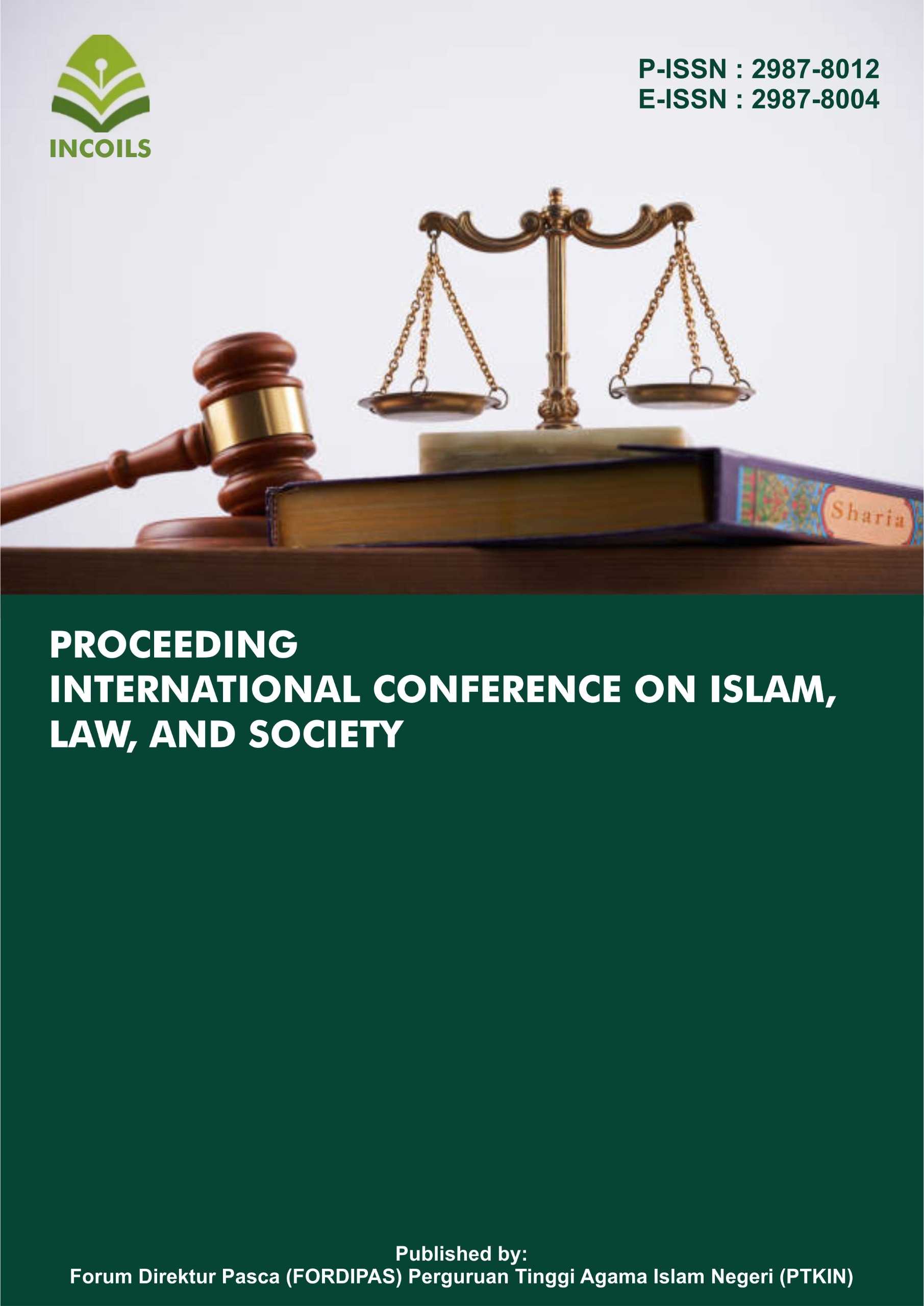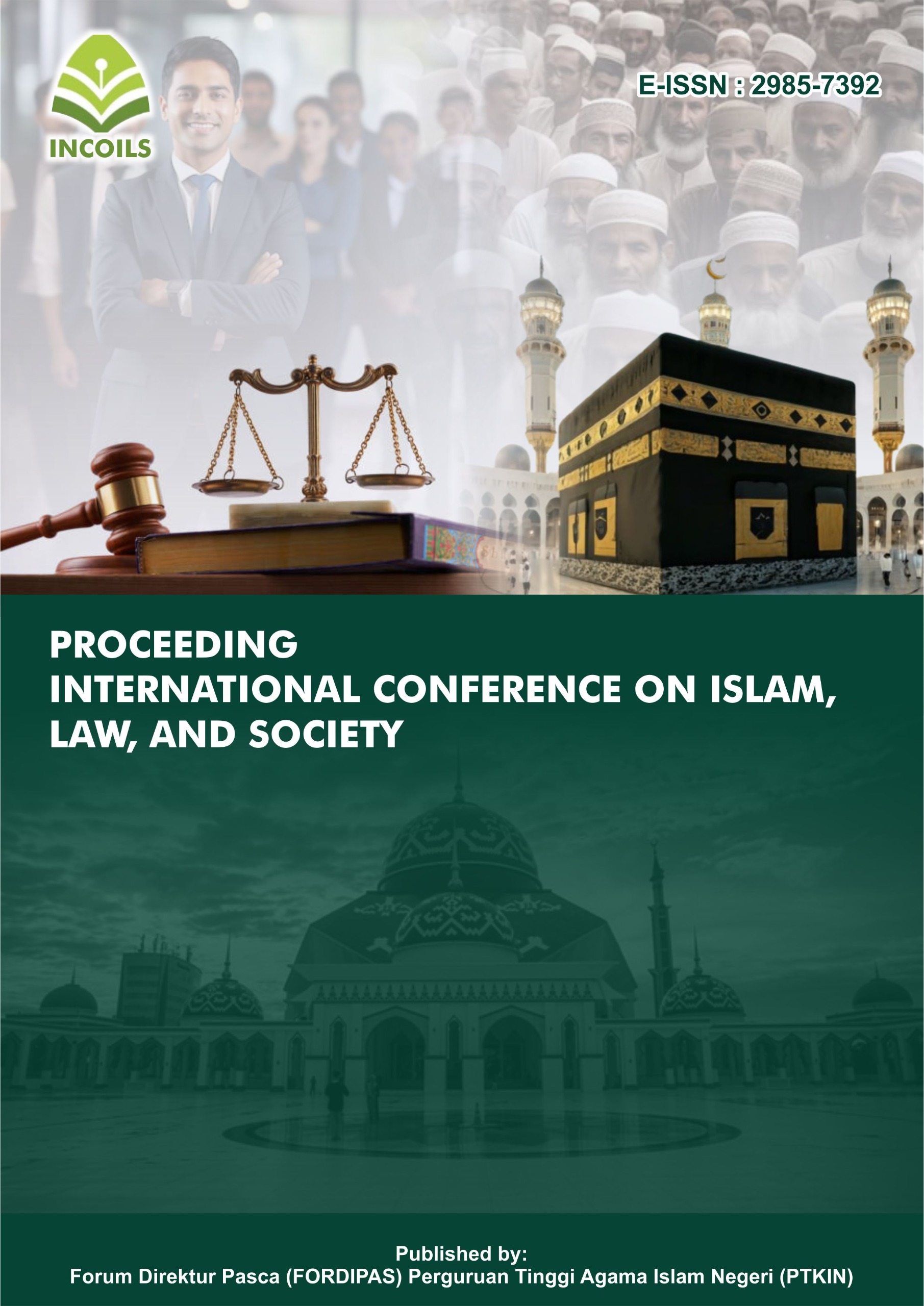DETERMINANTS OF FINANCING PREFERENCES IN ISLAMIC BANKING: DEVELOPMENT OF A THEORY OF PLANNED BEHAVIOR (CASE STUDY OF BANK SYARIAH YOGYAKARTA CUSTOMERS)
DOI:
https://doi.org/10.70062/incoils.v3i1.302Keywords:
TPB, Preferences, Behavior, Financing, Islamic BanksAbstract
The purpose of this study is to analyze the determinants of financing preference behavior in Islamic banks by developing the theory of planned behavior. This study used a sample of 250 respondents from the Yogyakarta community. The methodology used is quantitative, based on the philosophy of positivism, used to generalize samples from a specific population. Data collection used a questionnaire with a Likert scale as the instrument. Quantitative analysis was used to test the established hypotheses. The analytical method used in this study was Structural Equation Modeling (SEM), a data analysis that describes structural relationships expressed by a set of equations using SmartPLS 3.0 software. The results of the analysis indicate that attitude variables have no effect on behavioral intentions to prefer financing in Islamic banks. Meanwhile, subjective norms and perceived behavioral control variables have a significant positive effect on behavioral intentions to prefer financing in Islamic banks. The results also indicate that religiosity can moderate intentions to prefer financing in Islamic banks. This means that religiosity can increase customer intentions to finance in Islamic banks. This finding suggests that some customers tend to be dissatisfied with financing products in Islamic banks. Therefore, Islamic banking must continue to strive to improve services and truly implement sharia principles in its operational activities.References
Abdul Hafeez Quressh and Kashif Ur Rehman. (2012). A. Comparison Between Islamic Banking and Conventional Banking Sector in Pakistan. Journal Information Management and Business Review, 4(4), 195-204.
Ajzen. (1991). The Theory of Planned Behavior. Organizational Behavior and Human Decision Processes, 50(2), 179-211.
Amin, H. (2017). Consumer attitude and preference in the Islamic mortgage sector: a study of Malaysian consumers. Management Research Review, 40(1), pp. 95-115.
Beldad & S. Hegner. (2018). Determinants of Fair Trade Product Purchase Intention of Dutch Consumers According to the Extended Theory of Planned Behaviour. Journal of Consumer Policy, 40(1), 191-210.
Bridget K. Behe 1, B. L. (2013). Consumer Preferences for Local and Sustainable Plant Production Characteristics. ASHS Journals, 200-208.
Bryman, A. (2008). Social Research Methods. New York: Oxford University Pers.
D. Ancok & Suroso. (2008). Psikologi Islam: Solusi Islam atas Problem-problem Psikologi. Yogyakarta: Pustaka Pelajar.
D.J. Michener et. al. (2004). Social Psychology. Australia: Thomson Wadsworth Fifth Edition.
Gregory D. Webster et. al. (2019). Measurement in Social Psychology. Taylor and Francis.
https://republika.co.id/beriita/noywh5/inilahh-10-negara-dengann-populassi-musllim-terbesar-di-duniia, diakses tanggal 15 Maret 2021. (t.thn.).
Idris, A. R. (2011). Religious Value as the Main Influencing Factor to Customers Patronizing Islamic Ban. World Applied Sciences Journal, 2(12), 8-13.
Imam Ghozali dan Hengky Latan. (2015). Partial Least Squares Konsep Teknik dan Aplikasi menggunakan Program SmartPLS 3.0 untuk Penelitian Empiris. Semarang: Universitas Diponegoro Semarang.
Imran Aslan. (2017). Interest Free Banking: Reasons for Choosing Islamic Banking in Bingol City. Journal Price Academia, 3(1), 257-268.
Jamshed Khattak. (2017). Buying Meat for Family in the Collectivist Culture: An Application of the Theory of PLanned Behavior. NUML International Journal of Business & Management, 12(1), 145-163.
Kasmir. (2010). Manajemen Perbankan. Jakarta: PT Raja Grafindo.
Khaliq, Ghulam Ali Rustam and Michael M. Dent. (2011). Brand Preference in Islamic Banking. Journal of Islamic Marketing, 2(1), 74-82.
Martin ajzen & Fishbein. (2005). Theory Based Behavior Change Interventions: Comments on Hobbies and Suton. Journal of Health Psychology, 10(1), 27-31.
Martin S. Hagger, et. al. (2020). The Handbook of Behavior Change. Cambridge University Pers.
Morissan. (2015). Teori Komunikasi: Individu Hingga Massa. Jakarta: Kencana.
Muhammad Akib & Bedjo Santoso. (2019). PENGARUH SUBJECTIVE NORM DAN PERCEIVED BEHAVIOURAL CONTROL. Proceedings 6th NCAB (National Conference on Applied Business), 264-272.
OJK. (2020). www.ojk.co.id.
Rodney Stark, Charles Y. Glock. (1968). American Piety: The Nature of Religious Commitment. Los Angeles: University of California Press.
Schroeder, R. G. (2005). Financial Accounting Theory and Analysis. North Carolina: University of North Carolina at Charlotte Emeritus.
Slovic, P. (2006). Slovic, Paul. Dalam P. Slovic, The Construction of Preference (hal. 50-62). New York: Cambridge University Press.
Sofyan Yamin dan Heri Kurniawan. (2011). Generasi Baru Mengolah Data Penelitian dengan Partial Least Square Path Modeling. Jakarta: Salemba Empat.
Sugiyono. (2012). Metodologi Penelitian Kuantitatif, edisi Revisi. Bandung: Alfabeta.
Veithzal Rivai et. al. (2011). Islamic Banking. Jakarta: PT Raja Grafindo.
Yusnidah Ibrahim & Imran Arshad. (2017). Examining the Impact of Product Involvement, Subjective Norm and Perceived Behavioral Control on Investment Intentions of Individual Investors in Pakistan. Investment Management and Financial Innovations, 14(4), 181-193.
Zaimy Johana Johan. (2016). Conceptualizing the Influences of Knowledge and Religiosity on Islamic Credit Card Compliance. Procedia Economics and Finance, 37, 480-487.
Downloads
Published
How to Cite
Issue
Section
License

This work is licensed under a Creative Commons Attribution-ShareAlike 4.0 International License.







